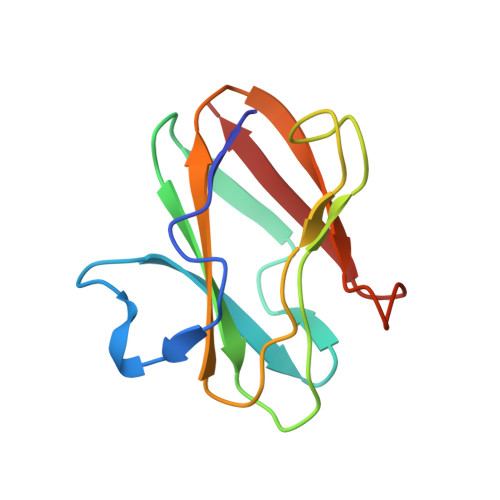Generation of Novel Copper Sites by Mutation of the Axial Ligand of Amicyanin. Atomic Resolution Structures and Spectroscopic Properties
Carrell, C.J., Ma, J.K., Antholine, W.E., Hosler, J.P., Mathews, F.S., Davidson, V.L.(2007) Biochemistry 46: 1900-1912
- PubMed: 17295442
- DOI: https://doi.org/10.1021/bi0619674
- Primary Citation of Related Structures:
2IDQ, 2IDS, 2IDT, 2IDU - PubMed Abstract:
Amicyanin from Paracoccus denitrificans is a type 1 copper protein with three strong equatorial copper ligands provided by nitrogens of His53 and His95 and the sulfur of Cys92, with an additional weak axial ligand provided by the sulfur of Met98. Met98 was replaced with either Gln or Ala. As isolated, the M98A and M98Q mutant proteins contain zinc in the active site. The zinc is then removed and replaced with copper so that the copper-containing proteins may be studied. Each of the mutant amicyanins exhibits a marked decrease in thermal stability relative to that of native amicyanin, consistent with the weaker affinity for copper. Crystal structures were obtained for the oxidized and reduced forms of M98A and M98Q amicyanins at atomic resolution (
Organizational Affiliation:
Department of Biochemistry and Molecular Biophysics, Washington University School of Medicine, St. Louis, Missouri 63110, USA.
















